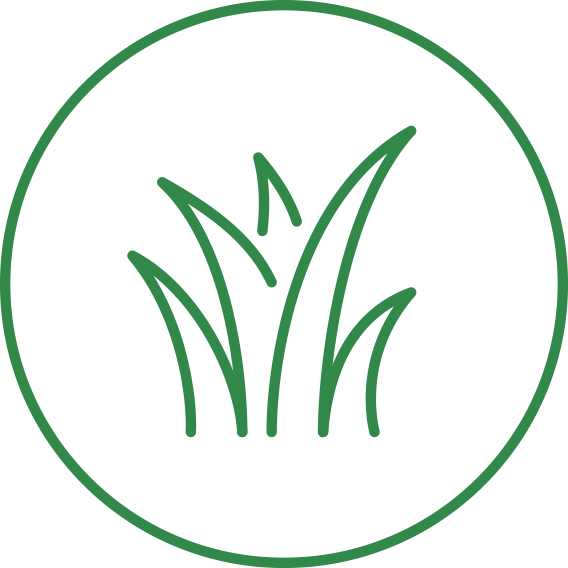What if some or all of your lawn care needs are handled by professionals? It’s still possible to have professional lawn care that is environmentally friendly and adheres to the Lawn to Lake principles. Here are some questions to ask when evaluating landscapers and lawn care professionals to ensure you are receiving services that benefit your lawn and protect water quality.
What services are included in the cost?
It is important to know exactly what services are provided within your lawn care contract. Beyond mowing, what other lawn care services are provided? Ask if core aeration, over seeding, or filling bare spots are included or if they are an additional cost.
Who is responsible for nutrient management (fertilization)? Who monitors and controls for weeds, pests, and disease?
These two management practices could have an impact on water quality, so it is important to identify who is responsible and that the proper procedures and are products used.
Fall fertilization with a zero-phosphorus product is recommended for cool-season grasses. A number of Great Lakes states, including Illinois, Michigan, Minnesota, New York, and Wisconsin, have restricted the use of fertilizers containing phosphorus for some applications. Excess fertilizer should always be swept back onto the lawn.
Weed and Feed products are not recommended. A preventative approach to weed and pest management is recommended so that you are treating the underlying problem and not just the symptoms. If needed, a targeted approach by spot-treating problem areas is preferred.
Will clippings be mulched and left on the lawn?
Ask that clippings be returned to the lawn to add nutrients and organic matter to the soil. It does not contribute to thatch. It will save time and disposal and fertilizer costs. Make sure clippings are swept back on the lawn.
What mowing height will be maintained?
To shade out weeds and grow deep roots, ask your provider to mow within these recommended heights for the dominate turfgrass species.
| SPECIES | HEIGHT (Inches) |
|---|---|
| Kentucky bluegrass | 2 to 3.5 |
| Perennial ryegrass | 2 to 3.5 |
| Fine fescue | 2 to 3.5 |
| Tall fescue | 2.5 to 4 |
| Zoysiagrass | 1.0 to 2.0 |
| Bermudagrass (common) | 1.5-2.5 |
How will you communicate? Phone, email, text, or in person?
Perhaps most importantly, identify the best way to communicate needs, expectations, or concerns. It may be helpful to communicate any lawn problems that you may identify. Managing a lawn ecosystem is a collaborative process.








